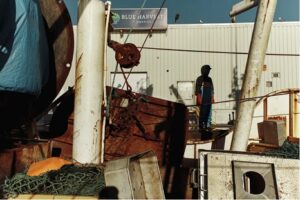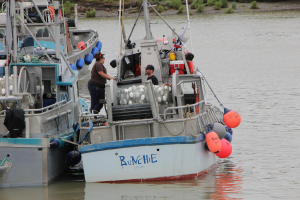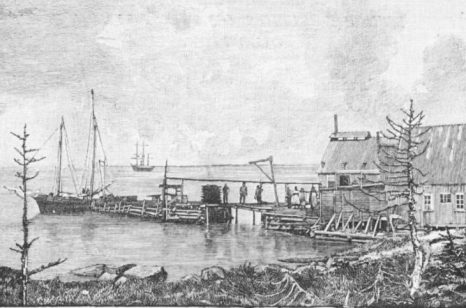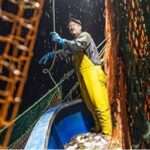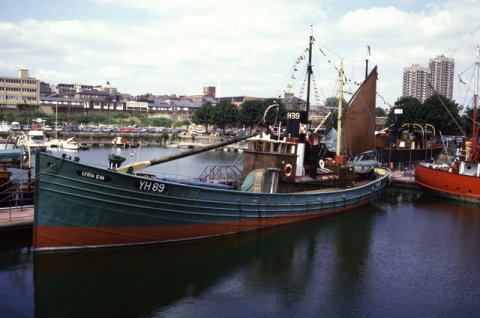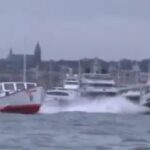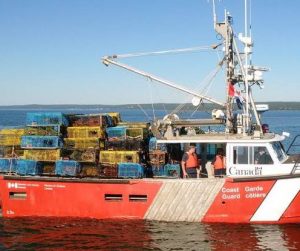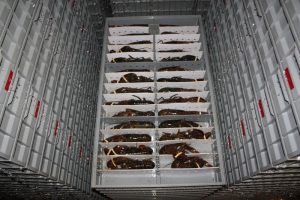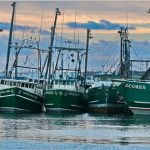Tag Archives: electronic monitoring
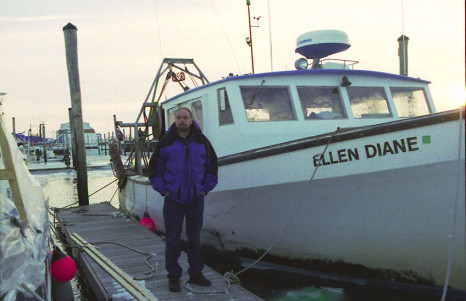
Your View: Even ‘smart’ video monitoring is onerous to fishermen
I would like to make several observations regarding Michael Bonner’s Aug. 21 article, “Delegation supports Rafael’s forfeiture toward electronic monitoring.” First of all, state legislators’ support for utilizing the forfeiture to fund the electronic monitoring (surveillance), presupposes that this form of electronic monitoring will be supported and adopted. It surely does not seem to be the favored choice of monitoring, as far as the groundfish industry is concerned. In fact, they are not in favor of any form of monitoring that has been proposed to date. NOAA fisheries Regional Administrator John Bullard (soon to be retiring) is quoted as saying that he thinks that video monitoring is a major benefit to the industry. I’m not sure who he thinks he’s going to convince with that statement. Surely not the fishing industry. If that were the case, New Hampshire fisherman David Goethel likely would not be requesting that this “benefit” be reviewed by the U.S. Supreme Court, click here to read the op-ed by Jim Kendall 19:04

Mass delegation supports putting Carlos Rafael’s forfeiture toward electronic monitoring
John Bullard wants to arm fishing vessels with a smartphone — figuratively speaking. “Nobody has rotary phones anymore, we just assume smartphones are the way we communicate and all the benefits of smartphones we’ve come to expect as normal,” Bullard said. ”(Electronic monitoring) is what we’re going to transition to, but it’s going to take time.” NOAA’s Northeast Regional director said he believes current methods can lead to inaccurate science. Last week, NOAA conducted a fishing stock assessment meeting in New Bedford where similar concerns of bad science emerged. The root of the concern was data from false reports. Electronic monitoring, specifically cameras on vessels, would provide accurate information. click here to read the story 21:39
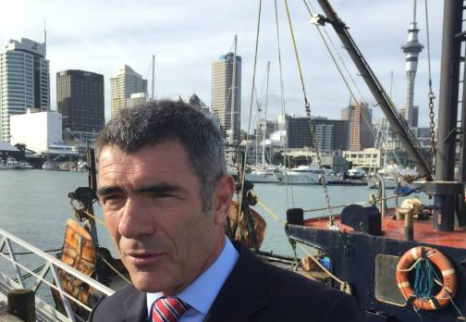
Feeding the data gluttons
I see the Ministry for Primary Industries is claiming it needs GPS tracking and cameras on commercial fishing boats to better monitor the fisheries and make better and more timely decisions. I say this is rubbish as we already give them tow by tow GPS coordinates and catch estimates in the trawl fishery and they do not use this information now. As for timely management decisions, well that’s a joke. Our elephant quota has been out of balance with catches for over 20 years. I spend more time avoiding fish than I do catching it. click here to read the letter 14:30
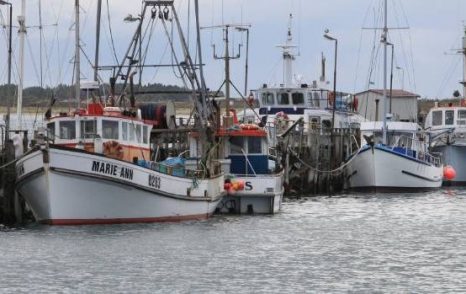
New Zealand: MPI agree to meet Southland fishermen over electronic monitoring regulations
Ministry for Primary Industries staff have agreed to front up to Southland fishermen who have questions about new monitoring and reporting regulations. From October 6, new measures will be rolled in to ensure that all commercial fishing boats are fitted with both GPS equipment and cameras, to improve monitoring of catch levels and to help prevent any illegal activity. More than 100 fishermen, from throughout Southland, met at the Ascot Park Hotel in Invercargill last week to discuss the implications of the ministry’s new Integrated Electronic Monitoring and Reporting System (IEMRS). Many in the commercial fishing industry were frustrated at the fact the new rules had been decided on without proper consultation or thought to their consequences. click here to read the story 09:43

Electronic Monitoring – New fishing regulations bring opposition in Southland
Some southern fishermen say new government regulations for commercial fishing boats could be put small operators out of business. From October 6, new measures will be rolled in to ensure that all commercial fishing boats are fitted with both GPS equipment and cameras, to improve monitoring of catch levels and to help prevent any illegal activity. Primary Industries Minister Nathan Guy said the changes would protect the sustainability of New Zealand’s fisheries, and “give us arguably the most transparent and accountable commercial fishery anywhere in the world”. However, some southern fishermen fear the new rules could also bring about a range of negative consequences. As well as the costs incurred from buying and maintaining the new equipment, it could also inadvertently reveal many fishermen’s jealously guarded marks (fishing spots). click here to read the story 15:59
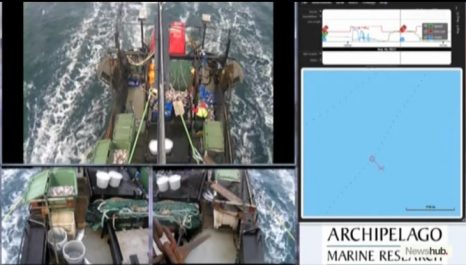
New Zealand – New digital fishing rules could cost thousands
All commercial fishing operators will have to invest thousands to install cameras and tracking devices on their boats, under new rules announced by the Ministry for Primary Industries (MPI). The push towards electronic monitoring of the industry follows concerns about widespread illegal practices, including the dumping of fish and misreporting of catch. The rules will not only apply for large trawl vessel, but all boats – even small ones – that are registered as being commercial. The cost for the tracking systems, cameras and maintenance of the gear could cost as much as $20,000 per operator. The regulator also says where evidence of illegal activity is uncovered, it will be used for prosecutions. click here to read the story 08:16
A Message from John Bullard – Looking Forward to Looking Back: Electronic Monitoring in New England Groundfish
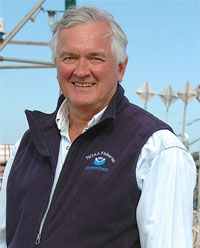 Electronic monitoring (EM) is being used for catch monitoring and reporting compliance in fisheries worldwide, but use in the Northeast has been somewhat limited. There are always challenges with ensuring the accuracy of self-reported fisheries catch data, but EM represents a new suite of tools to improve reporting accuracy and increase catch monitoring. If we want to provide scientists with the best information possible and manage our fisheries sustainably, then we need to consider all of the tools in the toolbox. click here to read the story 07:27 (The tool box is full of monkey wrenches and ball peen hammers)
Electronic monitoring (EM) is being used for catch monitoring and reporting compliance in fisheries worldwide, but use in the Northeast has been somewhat limited. There are always challenges with ensuring the accuracy of self-reported fisheries catch data, but EM represents a new suite of tools to improve reporting accuracy and increase catch monitoring. If we want to provide scientists with the best information possible and manage our fisheries sustainably, then we need to consider all of the tools in the toolbox. click here to read the story 07:27 (The tool box is full of monkey wrenches and ball peen hammers)
Fishing chiefs insist the industry is doing all it can to adhere to the discard ban
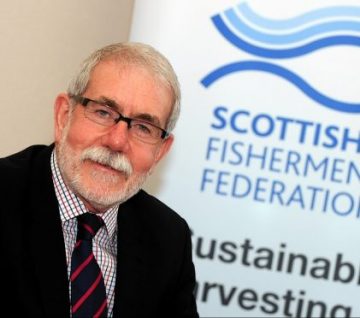 The Scottish Fishermen’s Federation (SFF) insisted fishers were doing “everything possible” to comply with the rules following claims by conservation group WWF the ban is being undermined by poor enforcement. SFF chief executive Bertie Armstrong said: “No-one hates discarding more than our fishermen, who are making a comprehensive effort to comply with this largely unworkable regulation. “Fishermen are doing everything possible to adhere to the rules, and industry and government are working closely together to develop more selective types of fishing gear that will reduce discarding even further. “Installing cameras on fishing vessels is no more than a side show and the presence or absence of them will not solve the problem. The real issue is getting the rules right and the proper refinements in place.” Read the rest here 16:57
The Scottish Fishermen’s Federation (SFF) insisted fishers were doing “everything possible” to comply with the rules following claims by conservation group WWF the ban is being undermined by poor enforcement. SFF chief executive Bertie Armstrong said: “No-one hates discarding more than our fishermen, who are making a comprehensive effort to comply with this largely unworkable regulation. “Fishermen are doing everything possible to adhere to the rules, and industry and government are working closely together to develop more selective types of fishing gear that will reduce discarding even further. “Installing cameras on fishing vessels is no more than a side show and the presence or absence of them will not solve the problem. The real issue is getting the rules right and the proper refinements in place.” Read the rest here 16:57
Sector Groups turning to technology to meet monitoring mandate
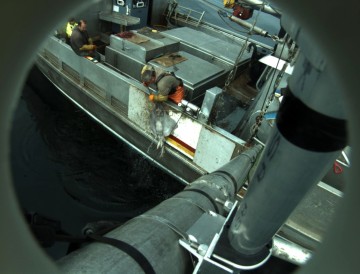 New England fishermen are starting to use digital cameras to document groundfish discards and prove they are fishing within established quotas, turning to technology for a method that may prove more cost effective than hiring human monitors. With support from the Gulf of Maine Research Institute, The Nature Conservancy is overseeing a new project, which launches on Wednesday, June 1 and is being hailed as a “new era in fisheries monitoring.” Up to 20 groundfishermen from the Maine Coast Community Sector and Cape Cod’s Fixed Gear Sector will use three to four cameras to capture fish handling activity on the decks of their vessels. After completing their trips, crews will send hard drives to third party reviewers who watch the footage and quantify the amount of discarded fish. Read the rest here 13:17
New England fishermen are starting to use digital cameras to document groundfish discards and prove they are fishing within established quotas, turning to technology for a method that may prove more cost effective than hiring human monitors. With support from the Gulf of Maine Research Institute, The Nature Conservancy is overseeing a new project, which launches on Wednesday, June 1 and is being hailed as a “new era in fisheries monitoring.” Up to 20 groundfishermen from the Maine Coast Community Sector and Cape Cod’s Fixed Gear Sector will use three to four cameras to capture fish handling activity on the decks of their vessels. After completing their trips, crews will send hard drives to third party reviewers who watch the footage and quantify the amount of discarded fish. Read the rest here 13:17
Electronic Monitoring — Straight talk about New England’s fisheries, Chris Brown, Bob Dooley
 In any relationship, uncertainty and mistrust tend to circle back and magnify themselves over time. In the case of New England fishermen and federal regulators, the result is what we see today. These two parties — who can and should be working together to ensure the economic and environmental health of our fisheries — are deadlocked in mistrust while the fishing industry lurches between federal bailouts and major criminal busts. As fishing industry leaders with a combined seven-plus decades on the water, we know it doesn’t have to be this way. Chris Brown is president of both the Rhode Island Commercial Fishermen’s Association and the Seafood Harvesters of America. Bob Dooley is a lifelong commercial fisherman and former president of the United Catcher Boats, an association of Alaska pollock and whiting trawlers. Read the op-ed here 10:40
In any relationship, uncertainty and mistrust tend to circle back and magnify themselves over time. In the case of New England fishermen and federal regulators, the result is what we see today. These two parties — who can and should be working together to ensure the economic and environmental health of our fisheries — are deadlocked in mistrust while the fishing industry lurches between federal bailouts and major criminal busts. As fishing industry leaders with a combined seven-plus decades on the water, we know it doesn’t have to be this way. Chris Brown is president of both the Rhode Island Commercial Fishermen’s Association and the Seafood Harvesters of America. Bob Dooley is a lifelong commercial fisherman and former president of the United Catcher Boats, an association of Alaska pollock and whiting trawlers. Read the op-ed here 10:40
Pacific Council approves three West Coast commercial fishing fleets for electronic monitoring
 As of 2017, the , and mothership catcher vessel fleets will no longer be required to carry human observers on fishing trips, helping to simplify logistics, reduce costs and increase profits for fishermen. Heather Mann, executive director of the Midwater Trawler’s Cooperative, an Oregon-based organization representing 18 whiting vessels, said: “What this decision does is transfer responsibility for catch accounting from the federal government to vessel operators, where it should be.” Read the rest here 17:24
As of 2017, the , and mothership catcher vessel fleets will no longer be required to carry human observers on fishing trips, helping to simplify logistics, reduce costs and increase profits for fishermen. Heather Mann, executive director of the Midwater Trawler’s Cooperative, an Oregon-based organization representing 18 whiting vessels, said: “What this decision does is transfer responsibility for catch accounting from the federal government to vessel operators, where it should be.” Read the rest here 17:24
New England: Fishing advocates praise allocation of funds for electronic monitoring
 Advocates for electronic monitoring technology in the commercial fishing industry are pleased that the Senate Appropriations Committee has secured federal resources to help defray costs associated with regulating catch sizes.On Thursday, U.S. Senators Kelly Ayotte (R-NH) and Jeanne Shaheen (D- NH) announced that $3 million has been set aside for the development and installation of this technology. Fishermen hope it will replace the current model of in-person monitoring, which costs them approximately $700 per day every time they bring a person out.Josh Wiersma of the Environmental Defense Fund said appropriating the money is a step in the right direction. Read the rest here 07:20
Advocates for electronic monitoring technology in the commercial fishing industry are pleased that the Senate Appropriations Committee has secured federal resources to help defray costs associated with regulating catch sizes.On Thursday, U.S. Senators Kelly Ayotte (R-NH) and Jeanne Shaheen (D- NH) announced that $3 million has been set aside for the development and installation of this technology. Fishermen hope it will replace the current model of in-person monitoring, which costs them approximately $700 per day every time they bring a person out.Josh Wiersma of the Environmental Defense Fund said appropriating the money is a step in the right direction. Read the rest here 07:20
Op-ed: Bring more electronic monitoring to fishery
 In the sustainable fisheries conference held at Rhode Island College last week, audience members were asked various demographic and opinion questions about the ocean, fisheries, and management that were tabulated and presented on the spot. Unscientific, yes, but very interesting.,, We would like to see electronic monitoring pursued more aggressively, as we consider it superior to human monitors in terms of cost, efficiency and interaction with crew. We believe it will play a part in the ultimate goal of providing a consistent source of reliable data to better achieve the conservation and economic goals of the Magnuson-Stevens Act. Read the op-ed here 08:16
In the sustainable fisheries conference held at Rhode Island College last week, audience members were asked various demographic and opinion questions about the ocean, fisheries, and management that were tabulated and presented on the spot. Unscientific, yes, but very interesting.,, We would like to see electronic monitoring pursued more aggressively, as we consider it superior to human monitors in terms of cost, efficiency and interaction with crew. We believe it will play a part in the ultimate goal of providing a consistent source of reliable data to better achieve the conservation and economic goals of the Magnuson-Stevens Act. Read the op-ed here 08:16
Electronic Monitoring: Different Fisheries Require Different Solutions
 Dan Falvey fishes aboard the 50-foot FV Magia out of Sitka, Alaska, for Pacific cod, black cod, and halibut. Alongside that boat two cameras lean out over the water, each pointed at the spot where the longline emerges from the deep. When the hydraulic winch kicks into gear and the line starts coming in, the cameras switch on, recording high-definition video of everything the fishermen pull out of the water. Knowing what species come out of the water, and how much of each, is key to managing fisheries sustainably. In many fisheries, boats are required to carry an observer onboard to record that data. Read the NOAA article here 11:54
Dan Falvey fishes aboard the 50-foot FV Magia out of Sitka, Alaska, for Pacific cod, black cod, and halibut. Alongside that boat two cameras lean out over the water, each pointed at the spot where the longline emerges from the deep. When the hydraulic winch kicks into gear and the line starts coming in, the cameras switch on, recording high-definition video of everything the fishermen pull out of the water. Knowing what species come out of the water, and how much of each, is key to managing fisheries sustainably. In many fisheries, boats are required to carry an observer onboard to record that data. Read the NOAA article here 11:54
NOAA and it’s ENGO “Partner’s” issues report on at-sea monitors
 NOAA Fisheries this week stepped further into that maelstrom with a largely internally generated report that focuses on cost comparisons between the current manual system of at-sea monitoring and electronic monitoring. It also released an independent review of the NOAA report. The NOAA report, generated with the assistance of the Gulf of Maine Research Institute and other non-governmental organizations, concedes a wide array of assumptions — it is based on hypothetical Northeast multispecies and Atlantic herring and mackerel fisheries — and accepts that it is merely “a starting point for developing future [electronic monitoring] program designs.” The conclusions? Read the rest here 08:14
NOAA Fisheries this week stepped further into that maelstrom with a largely internally generated report that focuses on cost comparisons between the current manual system of at-sea monitoring and electronic monitoring. It also released an independent review of the NOAA report. The NOAA report, generated with the assistance of the Gulf of Maine Research Institute and other non-governmental organizations, concedes a wide array of assumptions — it is based on hypothetical Northeast multispecies and Atlantic herring and mackerel fisheries — and accepts that it is merely “a starting point for developing future [electronic monitoring] program designs.” The conclusions? Read the rest here 08:14
Hypothetically Speaking, Electronic Monitoring Cost Reports Released
 Observer Committee members, Herring Committee members, and Herring Advisory Panel members, Please see below for links to reports re. cost information related to electronic monitoring (EM). This information will also be provided as part of the omnibus Draft Industry-Funded Monitoring (IFM) Amendment, to be released in the immediate future. The second report may be of particular interest, as it compares the costs of a hypothetical at-sea observer program with an electronic monitoring program for midwater trawl vessels to monitor maximized retention in the Atlantic herring and mackerel fisheries. Read the rest here 11:40
Observer Committee members, Herring Committee members, and Herring Advisory Panel members, Please see below for links to reports re. cost information related to electronic monitoring (EM). This information will also be provided as part of the omnibus Draft Industry-Funded Monitoring (IFM) Amendment, to be released in the immediate future. The second report may be of particular interest, as it compares the costs of a hypothetical at-sea observer program with an electronic monitoring program for midwater trawl vessels to monitor maximized retention in the Atlantic herring and mackerel fisheries. Read the rest here 11:40
Electronic Monitoring versus At Sea Observers – Technology buoys fishermen devastated by cod’s collapse
 By the end of this year, NMFS wants groundfish fishermen to pay for their own “at-sea monitors,” the independent observers who collect data on bycatch and ensure fishermen follow the rules..”It’s the people that we’re dealing with that we trust,” said . “I know that John is trying to do the best he can, and I know the people he’s got working for him are trying to do the best they can.” As for the rest of NOAA? “Would you trust someone who has screwed you nonstop your whole life?” he said. “Thirty-five years ago, I thought it was different. I don’t anymore.” Read the rest here 12:09
By the end of this year, NMFS wants groundfish fishermen to pay for their own “at-sea monitors,” the independent observers who collect data on bycatch and ensure fishermen follow the rules..”It’s the people that we’re dealing with that we trust,” said . “I know that John is trying to do the best he can, and I know the people he’s got working for him are trying to do the best they can.” As for the rest of NOAA? “Would you trust someone who has screwed you nonstop your whole life?” he said. “Thirty-five years ago, I thought it was different. I don’t anymore.” Read the rest here 12:09
Cameras to remedy observer problems in Alaska?
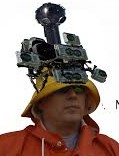 Smaller boats in Alaska’s offshore fisheries may no longer have to carry human observers in the future, if a plan to deploy cameras proves feasible. At its Sitka meeting this month, the North Pacific Fishery Management Council gave the green light to an inter-agency effort to develop Electronic Monitoring. The council would like to see cameras in action within three years. “Our observer was on board. And our observer was seasick for about half the days. Conditions were cramped, and I got to sleep on the galley table,” said Steven Rhoads,,, Read the rest here 18:07
Smaller boats in Alaska’s offshore fisheries may no longer have to carry human observers in the future, if a plan to deploy cameras proves feasible. At its Sitka meeting this month, the North Pacific Fishery Management Council gave the green light to an inter-agency effort to develop Electronic Monitoring. The council would like to see cameras in action within three years. “Our observer was on board. And our observer was seasick for about half the days. Conditions were cramped, and I got to sleep on the galley table,” said Steven Rhoads,,, Read the rest here 18:07
Byrne, and Florida senator send letter in support of snapper – We Love Snapper!
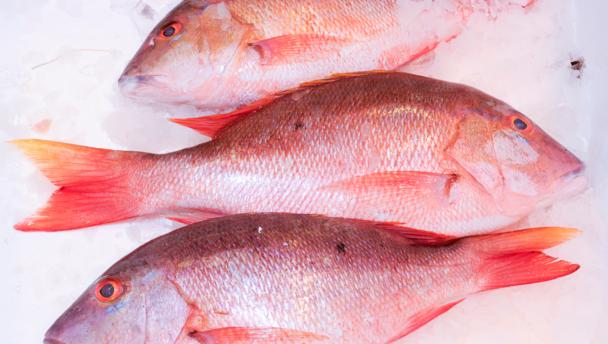 Two respected Gulf Congressmen have taken the lead on a letter addressed to the Secretary of Commerce ensuring NOAA acts swiftly on the distribution of Gulf recreational electronic data collection funding passed last year. The U.S. Congress, the Gulf of Mexico Regional Fisheries Management Council, Gulf commercial fishermen and federally permitted Gulf recreational charter-for-hire captains know the importance of accurate and real time data collection based on electronic monitoring of Gulf fisheries,,, Read the rest here 12:47
Two respected Gulf Congressmen have taken the lead on a letter addressed to the Secretary of Commerce ensuring NOAA acts swiftly on the distribution of Gulf recreational electronic data collection funding passed last year. The U.S. Congress, the Gulf of Mexico Regional Fisheries Management Council, Gulf commercial fishermen and federally permitted Gulf recreational charter-for-hire captains know the importance of accurate and real time data collection based on electronic monitoring of Gulf fisheries,,, Read the rest here 12:47
Matthew P. Mullin, Environmental Defense Fund – We need cameras monitoring every fishing vessel
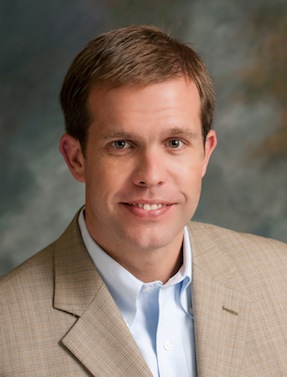 THOMAS FARRAGHER is absolutely right: If politicians, ranging from the governor to the attorney general to our congressional delegation, really want to help the fishing industry and save the fish, they need to listen to fishermen like Frank Mirarchi (“An expert to reel in,” Metro, Jan. 17). Mirarchi and fishermen like him have seen the benefit of on commercial vessels in New England for years. We need to see what is happening at sea — what is being caught and where, and what is being thrown overboard. Read the rest here 08:55
THOMAS FARRAGHER is absolutely right: If politicians, ranging from the governor to the attorney general to our congressional delegation, really want to help the fishing industry and save the fish, they need to listen to fishermen like Frank Mirarchi (“An expert to reel in,” Metro, Jan. 17). Mirarchi and fishermen like him have seen the benefit of on commercial vessels in New England for years. We need to see what is happening at sea — what is being caught and where, and what is being thrown overboard. Read the rest here 08:55
EDF Matt Mullins View: Electronic monitoring is inexpensive, effective
 The New England cod fishery is on the brink of collapse. For weeks now we have heard from all stakeholders, with some calling for more closures, some less, and others seeking financial aid for fishing families. We’ve even heard a few calling for an all-out ban on cod fishing. But what is missing from much of this conversation are constructive ideas to pave a path forward for fishermen in New England. Electronic monitoring is one of those solutions. Plenty of EDF hyperbole. Read the rest here 09:49
The New England cod fishery is on the brink of collapse. For weeks now we have heard from all stakeholders, with some calling for more closures, some less, and others seeking financial aid for fishing families. We’ve even heard a few calling for an all-out ban on cod fishing. But what is missing from much of this conversation are constructive ideas to pave a path forward for fishermen in New England. Electronic monitoring is one of those solutions. Plenty of EDF hyperbole. Read the rest here 09:49
NPFMC revamps observer program after first annual report
 NOME — The North Pacific Fishery Management Council took action to address issues with the revised marine observer program June 5, including getting rid of the vessel selection pool that put observers on certain smaller boats for 60 days at a time. Read more here 12:39
NOME — The North Pacific Fishery Management Council took action to address issues with the revised marine observer program June 5, including getting rid of the vessel selection pool that put observers on certain smaller boats for 60 days at a time. Read more here 12:39
PEER says electronic monitoring progress still dry-docked – Fishing fleet compliance? or Public Employee Job Security!
![]() “Cost effective electronic systems that meet both regulatory and scientific demands are nowhere near deployment,” said Jeff Ruch, executive director of PEER, a national non-profit alliance of local, state and federal scientists, and others dedicated to upholding environmental laws and values. “Grafting 21st century technology onto the decks of an 18th century industry is no simple task.” more@cordobatimes 16:06
“Cost effective electronic systems that meet both regulatory and scientific demands are nowhere near deployment,” said Jeff Ruch, executive director of PEER, a national non-profit alliance of local, state and federal scientists, and others dedicated to upholding environmental laws and values. “Grafting 21st century technology onto the decks of an 18th century industry is no simple task.” more@cordobatimes 16:06
Homer-based North Pacific Fisheries Association has received a $147,400 NFW Foundation grant to use electronic monitoring
Homer-based North Pacific Fisheries Association has received a $147,400 National Fish and Wildlife Foundation Fisheries Innovation Fund grant for a two-year project to use electronic monitoring in the pot and longline cod fisheries. National Marine Fisheries Service is providing another $120,000 in matching funds. NPFA president Buck Laukitis said the focus would be on the small boat cod fleet. The grant was awarded while NPFA was wrapping up a similar grant project for smaller halibut boats. continued
The North Pacific Fishery Management Council creates electronic monitoring working group, takes final action on flatfish flexibility, AFA vessel replacement
The North Pacific Fishery Management Council created a taskforce to discuss electronic monitoring as an option for marine observation today after significant public testimony and deliberations. continued

The council agreed to provide Amendment 80 cooperatives and Community Development Quota entities with some flexibility in its flatfish harvest each year. In another action, the council decided that American Fisheries Act, or AFA, vessel owners can rebuild or replace their vessels and still utilize Gulf of Alaska sideboards, subject to certain restrictions. In both cases, the motions for action passed unanimously. continued






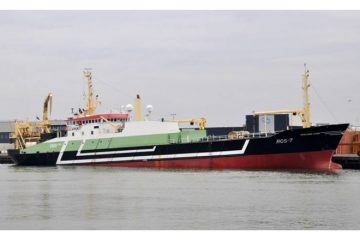 Australia’s federal fisheries authority is exploring an ambitious plan to stream live footage from fishing vessels in a bid to improve its ability to respond to controversial reports that nets are killing endangered marine animals. The plan could also help protect the authority’s on-board observers in rare instances where their daily reports expose them to aggression and threats from the crews with whom they spend weeks or months at sea. Dr James Findlay, chief executive of the Australian Fisheries Management Authority (AFMA), revealed that the agency had started approaching ship-to-shore communication providers to explore the possibility of using streaming video of activity on fishing vessels “as close to real-time as we can”. Dr Findlay revealed the agency’s ambitions during a senate estimates hearing last week. The environment and communications committee was questioning AFMA over its handling of a high-profile brush between a whale shark and the controversial factory freezer trawler the Geelong Star in February.
Australia’s federal fisheries authority is exploring an ambitious plan to stream live footage from fishing vessels in a bid to improve its ability to respond to controversial reports that nets are killing endangered marine animals. The plan could also help protect the authority’s on-board observers in rare instances where their daily reports expose them to aggression and threats from the crews with whom they spend weeks or months at sea. Dr James Findlay, chief executive of the Australian Fisheries Management Authority (AFMA), revealed that the agency had started approaching ship-to-shore communication providers to explore the possibility of using streaming video of activity on fishing vessels “as close to real-time as we can”. Dr Findlay revealed the agency’s ambitions during a senate estimates hearing last week. The environment and communications committee was questioning AFMA over its handling of a high-profile brush between a whale shark and the controversial factory freezer trawler the Geelong Star in February. 





























